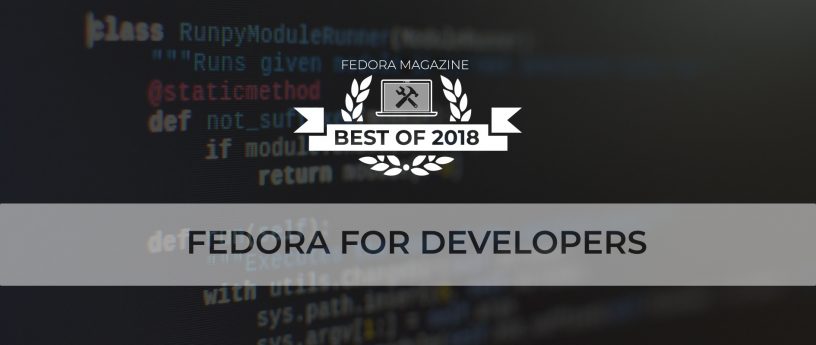Building custom apps in Python on Fedora — using either a Python IDE that helps you learn understand the language, or a popular editor that also works with many other languages. And what about Rust — a very fast and safe programming language. Yes, it’s been a whole year again! What a great time to look back at the most popular articles on the Fedora Magazine written by our awesome contributors.
Let’s dive into another article of the “Best of 2018” series — this time it’s all about developers, and how you can use Fedora to be your great developer workstation.
Building an RSS notifier in Python
Building a simple app is one of the best way to learn a programming language. Or a new environment. And Fedora loves Python!
This article walks you through building your very own RSS notifier using Python on Fedora. You’ll learn how to parse RSS feeds and send email with Python.
Never miss a Magazine article — build your own RSS notification system
Meet Thonny — A Python IDE that teaches you
Are you learning Python? Or do you want to just understand how it works under the hood? Thonny is a Python IDE designed specifically for this.
This article demonstrates how to use Thonny to understand how Python works — from calling functions to the difference between values vs. references. It’s debugger lets you explore everything that happens in the background. It’s a great tool for beginners.
Using VS Code for Python
Already fluent in Python and looking for an editor that would work well with the language? Maybe even one that could work with multiple languages? Let’s have a look at VS Code.
This article shows you how to install the Python extension. Its features include code linting, code formatting, or running tasks — such as a Flask server for development. You’ll also learn how to work with unit tests which is always useful!
Going fast and safe with Rust
And what about something else than Python? Something a bit more rusty? Well, meet Rust — a language designed to be blazingly fast and safe.
This article introduces you to Rust the programing language, its modules called Crates, and some applications written in Rust. You’ll also learn about the Rust SIG in Fedora should you wish to get even more involved.





